Art/computer work that has interfered with my welding but I never miss an opportunity to collect native plants. I have converted an old kayak rack into a plant drying rack. Stacking up and drying out.
Drying native grasses
Your Custom Text Here
Art/computer work that has interfered with my welding but I never miss an opportunity to collect native plants. I have converted an old kayak rack into a plant drying rack. Stacking up and drying out.
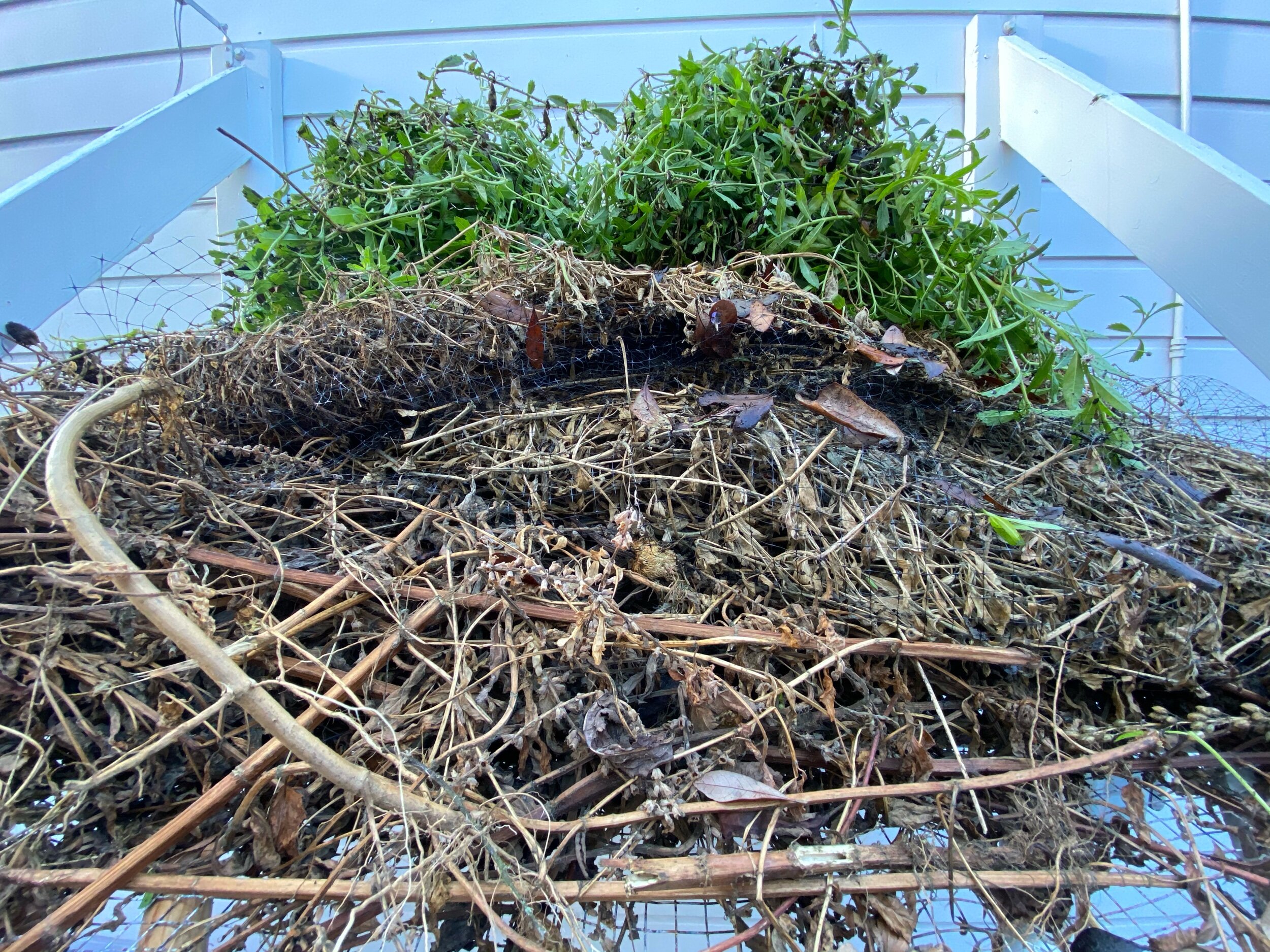
Drying native grasses
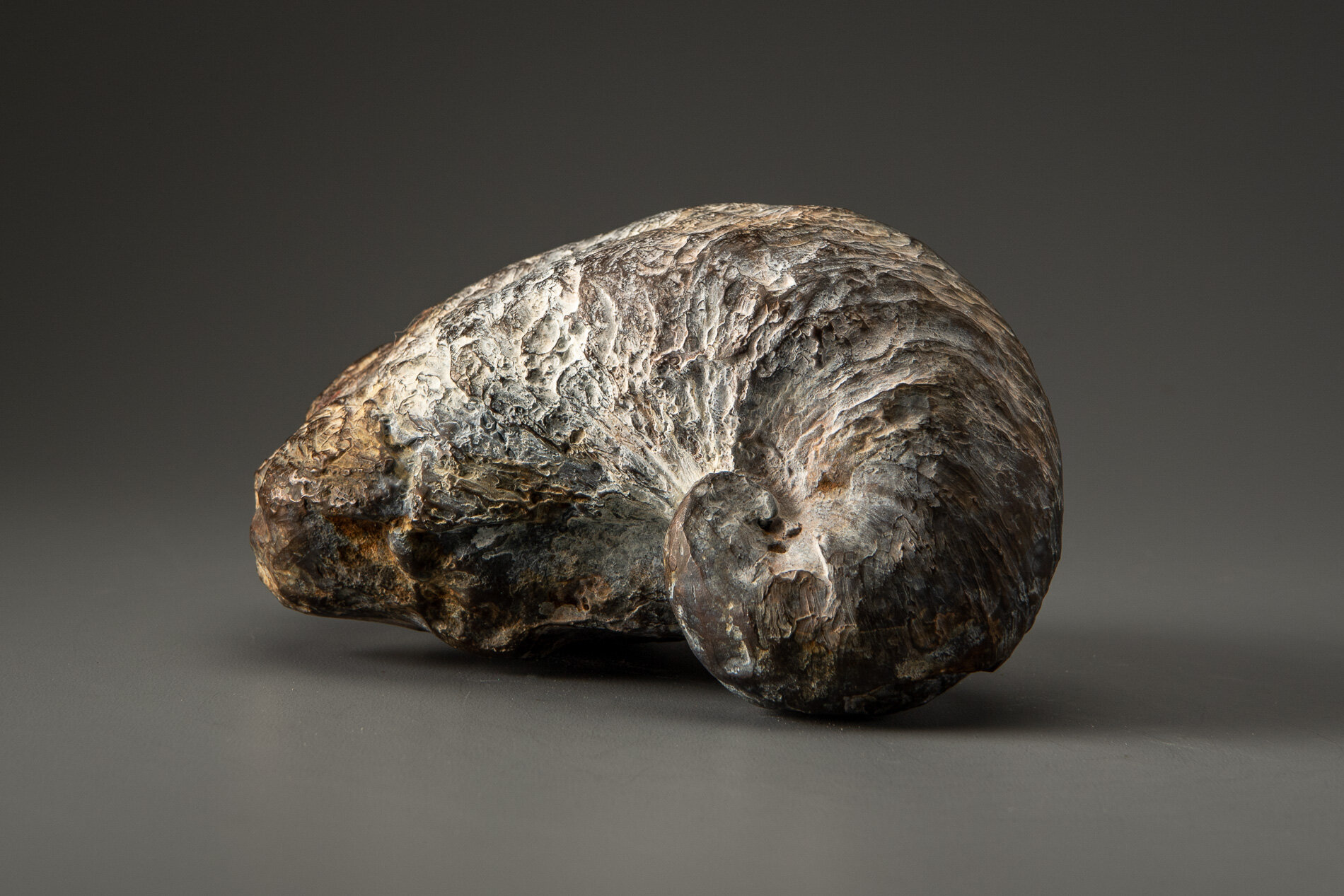
Mute Testimony.
3” X 6” X 4”
bronze
phot by Nash Baker

Stainless Steel finish changes everything 🤔 more to come
My goal for this piece is to embody joy, celebrate life, be complex yet straightforward, and have moments of imperfection.

I will attach to the wax sculpture red wax channels (sprues) and a brown wax cup.
Below the piece is sprued up and ready to dip.
The dipping process builds layer by layer a ceramic shell around the sculpture and sprues. Once the Shell is built I will burnout the wax leaving a hollow cavity to pour the bronze in.


Dip 1 Slurry only





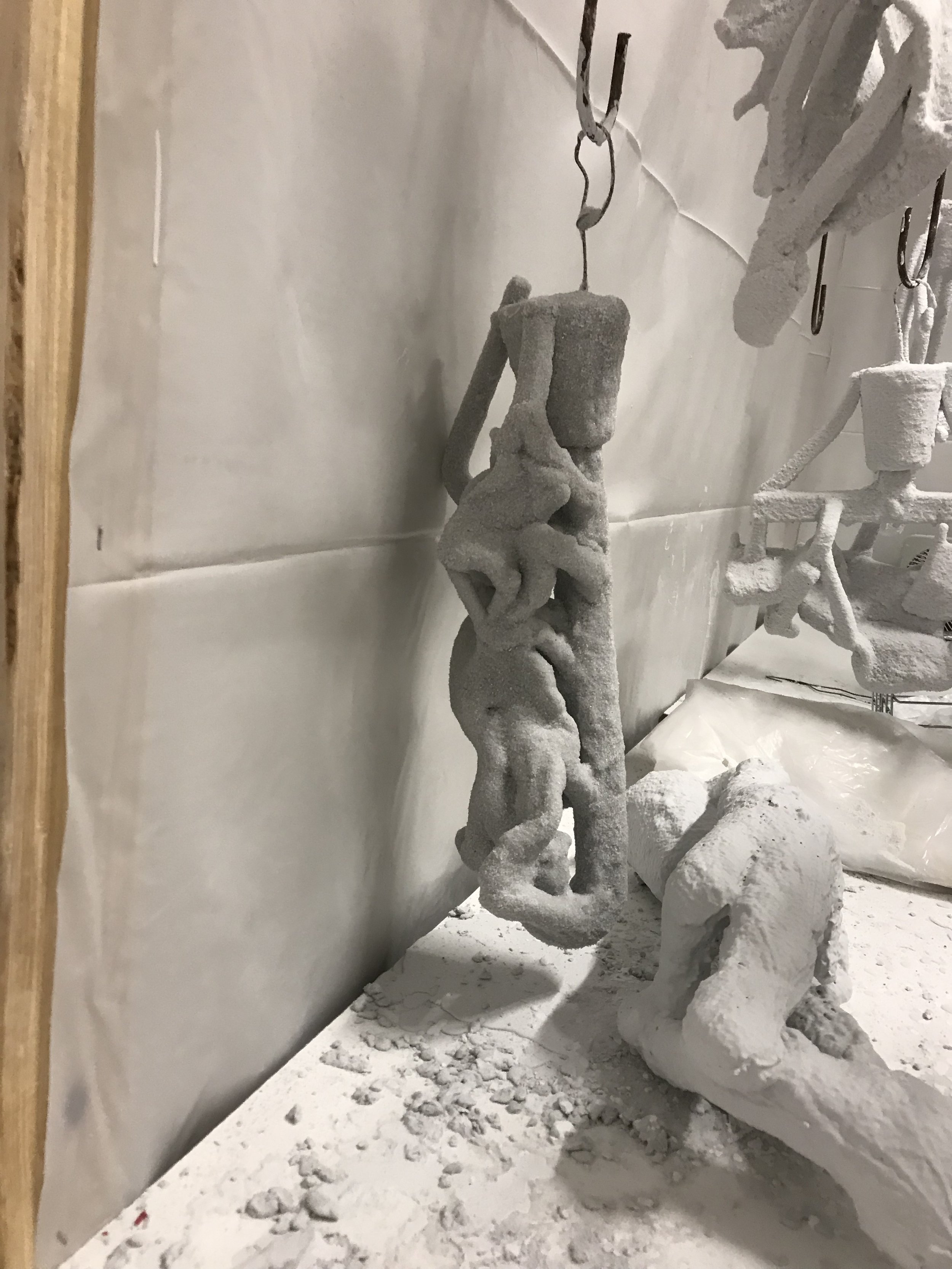



Final coat 24 hours after drying

Cutting the top of the cup and drilling holes to help the expanding gases escape when the wax is burned out.

The piece is now ready to be fired. The firing will harden the shell and melt out the wax sculpture, leaving the cavity for the bronze to be poured into. The wire sticking out will fall out when the wax is burnt out.

We poured the bronze into the shells last night. Now that the shell is cool it is time to break it off and see how it turned out.

the pour-

my shoulder has taken all the pounding it can. I will have to get help to finish breaking off the shell.
In the below images all the metal work is done and the piece is ready to patina.





Adding the white marble patina







As life happens, the lens we see through shifts. The lens I interpret this work through has adapted to current events.
As a result, I am updating my artist statement.
The Shadow of the Texas Rangers - late 1920's, The Texas Rangers in Fabens, Texas (a suburb of El Paso). During prohibition, the Texas Rangers traveled to the Texas/Mexico border, to deter the smuggling of illegally distilled alcohol. While on the border, they boarded in my grandparent's home; they became family friends. My reference photo for these drawings of the Rangers hung in my Grandparent’s home. As a child in the 60’s the photo always intrigued me. I was in awe of the well-heeled, respected law officials confidently posed in front of the rugged mountain and their curiously shaped shadows. I wondered why Granny Gene had a photo of the mythical cowboys and their rifles.
My father did not remember much about the Rangers; ironically, he did remember having a house full of thirsty Texas Rangers and accompanying his father to the edge of the Rio Grande River. His father would leave cash under a rock, the next day a bootlegger from Mexico would wade across the river on a mule, retrieve the compensation and place bottles of booze in the hole under the rock. This is when the term ”mule” surfaced.
The proud history of the Texas Rangers I grew up with has suffered from stories of abuses of power. In the historical photo, the overpowering southwestern sun reveals the dark shadows that tarnish the Rangers’ reputations.
Looking at this image today, through the experiences of 2020, the focus rests heavily on the dark shadows in law enforcement. Unfortunately, the deplorable actions of a few can ruin the reputation of a group. In this drawing, there is a balance of light and dark. It is important to remember history as it was experienced by the people living at the time but it is also important not to turn a blind eye to the dark side of our history. Finding this balance is where we are in 2020. It is time that we hold law enforcement to higher standards and that they find ways to police their own.
There is more good than bad. If you look for it, you will find it. The only reliable way to instill change is to lead by example and to recognize and celebrate those who are doing it right.

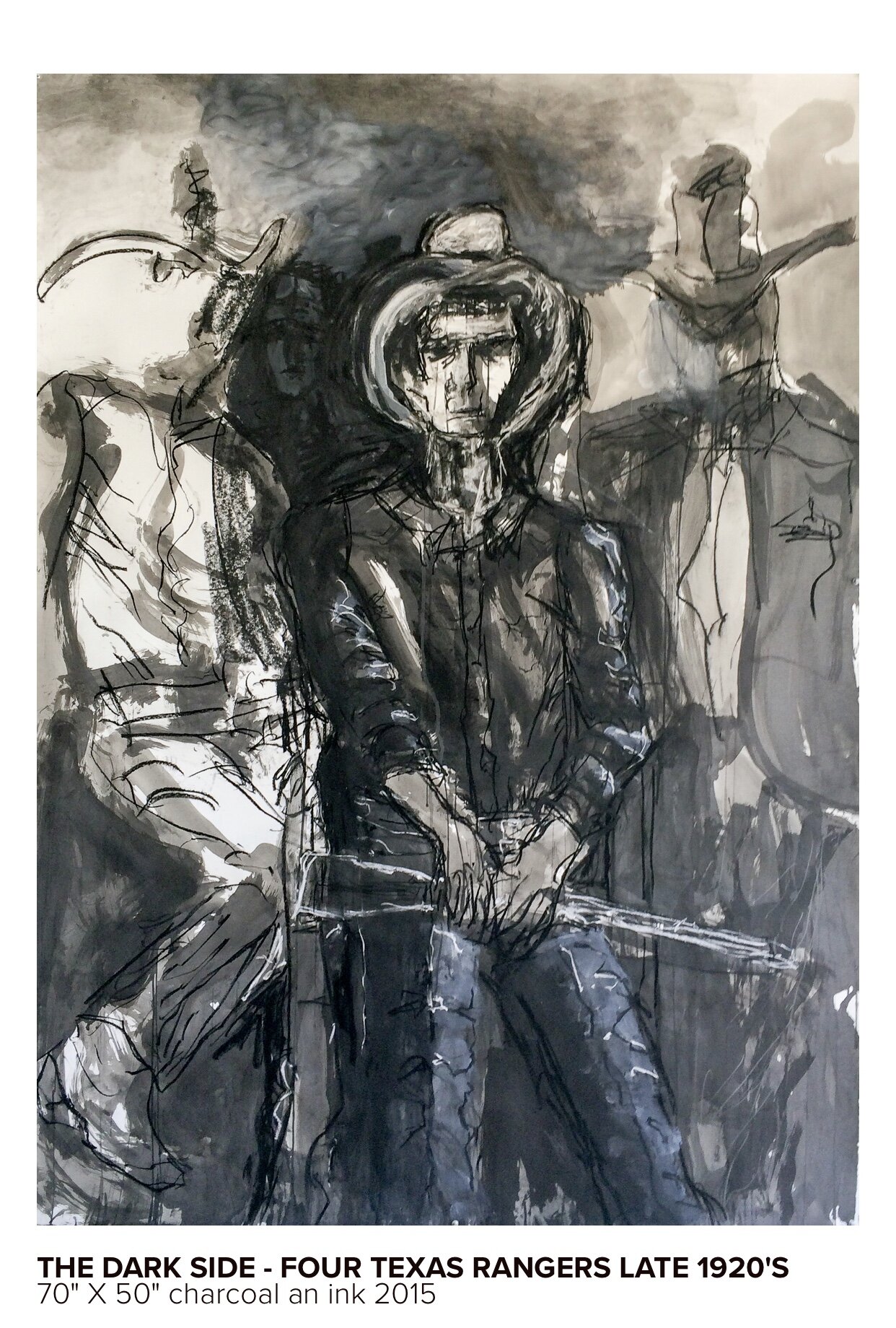
I started this piece 1 1/2 years ago but neglected to have it photographed until this week. Seeing it through the photographer’s eye, it has an additional layer of meaning in 8/2020.
Originally it was a maquette for a memorial piece. We ended up going a different path for the memoriam. Personally I was happy this piece emerged from the event and cast it in bronze. It resonates with me because years ago I became fascinated, completely sucked in by modern neurology. Neurology was my obsession. I read everything a Mom could get her hands on. My favorite was Phantoms in the Brain by V. S. Ramachandran. The brain is amazing and especially since neurologists have learned that it is plastic and is changed with everything you do, everything you tell yourself or others tell you changes your brain. This knowledge is what gives every human a chance for hope. Dreaming is the first step, and self-talk is hugely important. You can control how you see the world, and how you see yourself, “fake it until you make it works“. What you think you will become”.
The additional layer - living through a pandemic is choosing how one reacts to stressful and depressing situations. Humans choose how we react and how we see. “what you think you will become”. The texture of the piece is composed of repetitive arched lines, they are mirrored in the profiles/contours of the work. It is an abstract sculpture but I clearly read “what we think we become”. What we look for we will find, 8/2020 is a good time to control your thoughts and look for the light. If you look for it you will find it.

“what you think you become”
bronze
12” X 4” X 3”

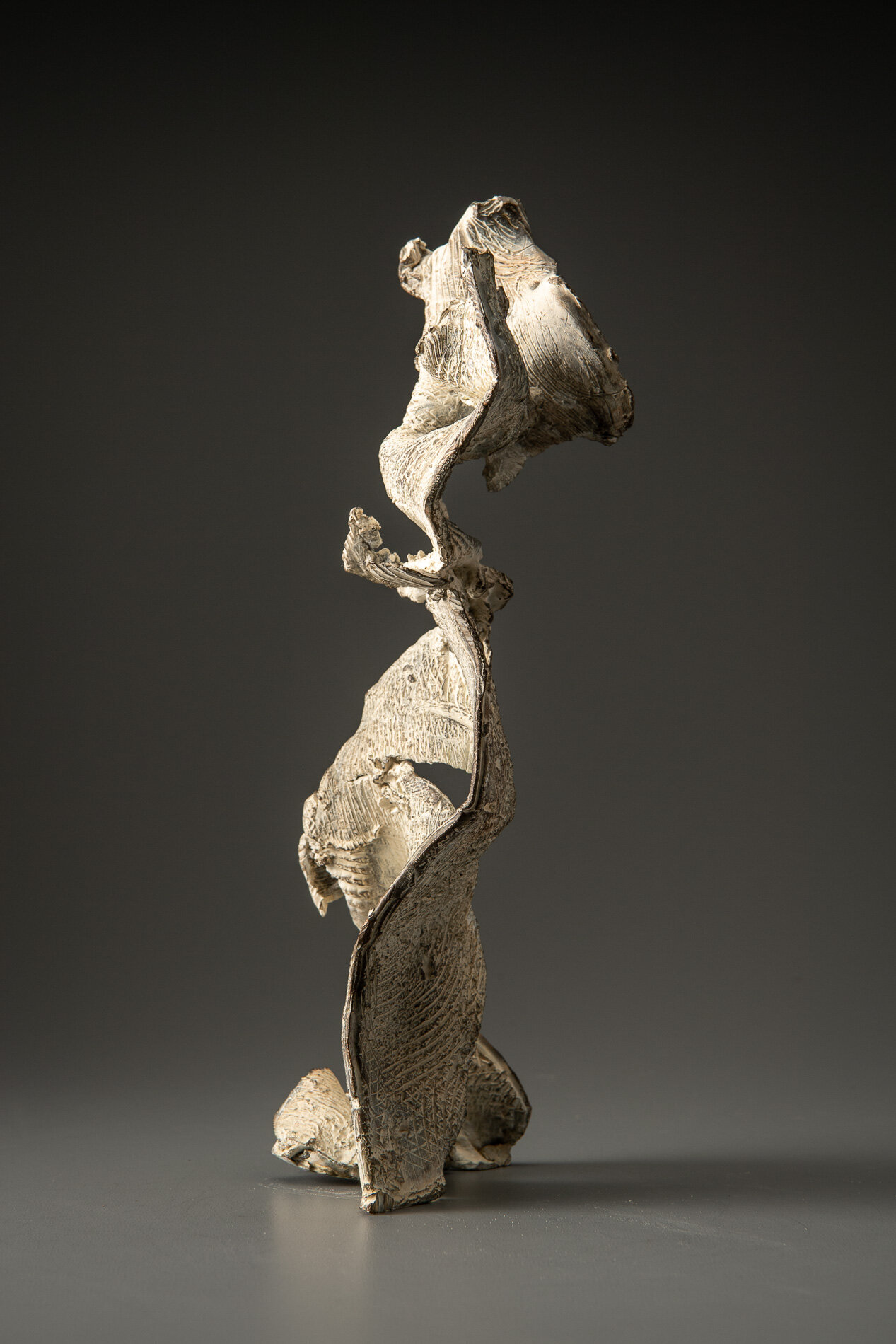
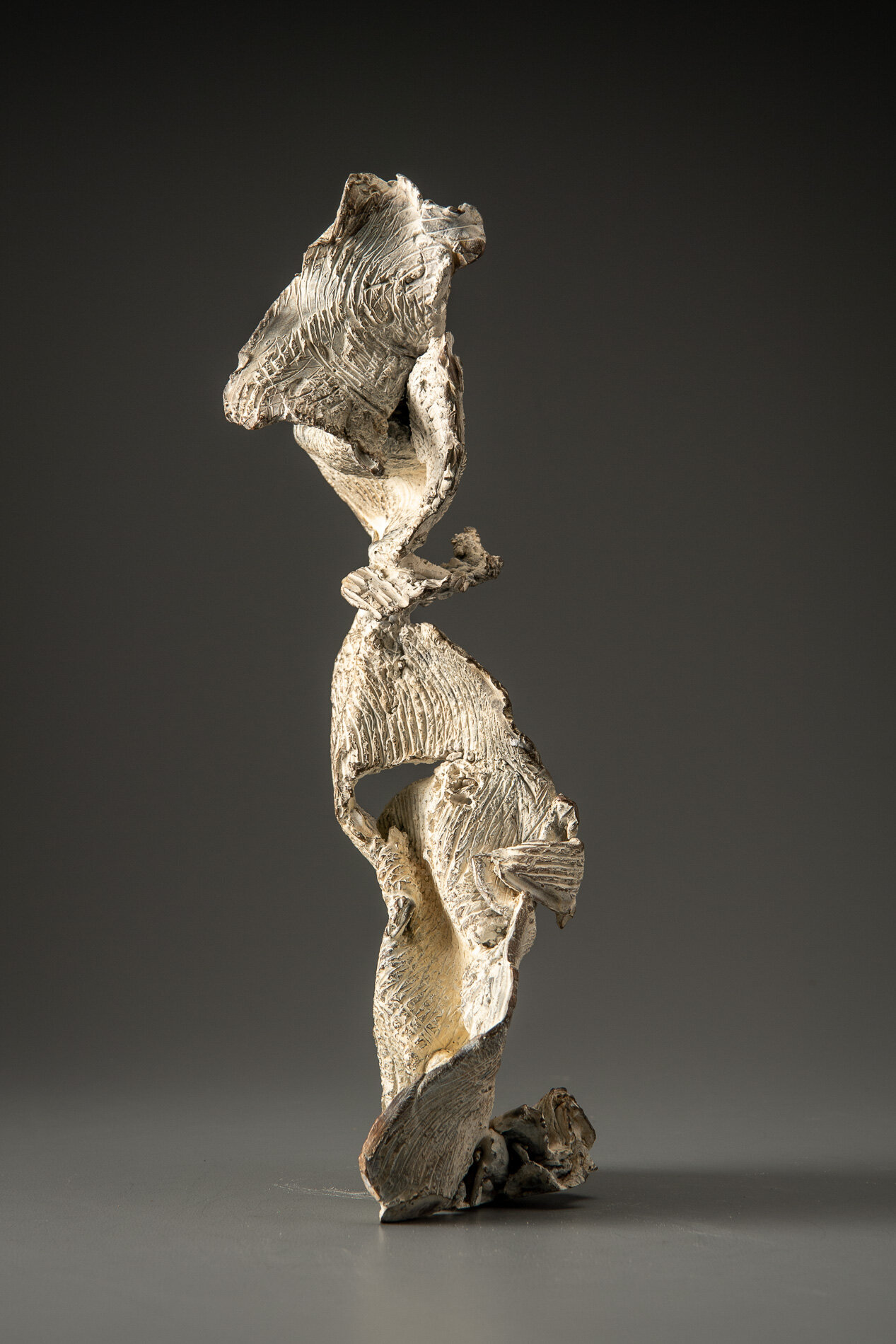
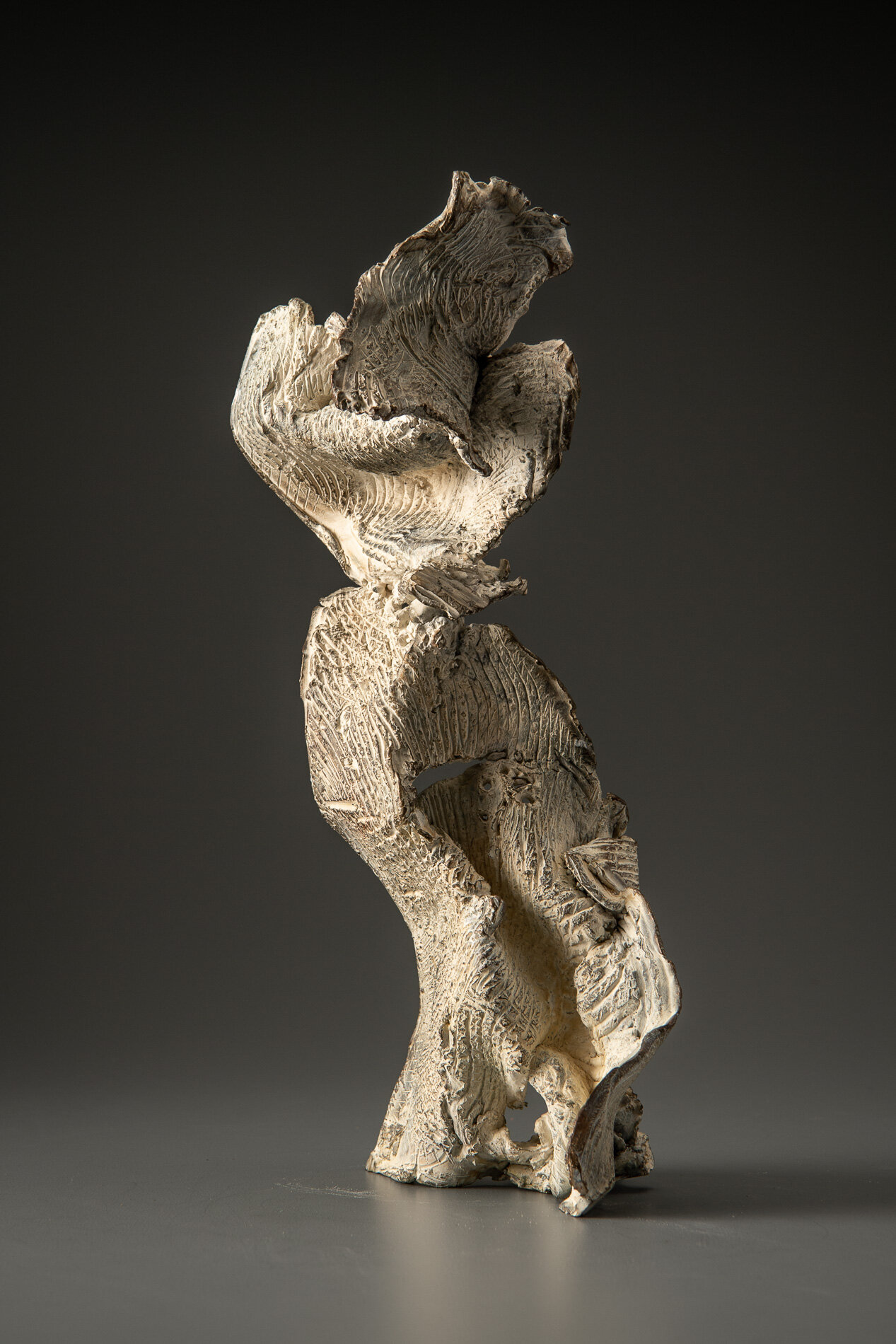


Range by David Epstein - in my mind is a must-read for any artist, creative writer, inventor, scientist moms or anyone who solves problems.
https://pepperdine-graphic.com/book-review-lessons-for-higher-education-in-david-epsteins-range/
”Everyone needs habits of mind that dance across disciplines.”
- D. Epstein

“Habits of mind that dance across disciplines-“ - D. Epstein
I took time this weekend to photograph my studio- just for the memories. I never dreamed I would have an art studio.






One of the ppleasures of having a studio, Is it provides a space to meet with other artists, friends, and art lover acquaintances and get their reactions to my work? Everyone perceives art differently, and it is incredibly beneficial to get feedback from a variety of folks.

Today I worked on the lower part of it's cheekbones and then I added a rear jawbone.

Looking up the mouth and nose of head minus the lower jaw.

The old guys face left side

Looking through the skull

The right profile.
January 19, 2020


The ranch Anatolian livestock guard dogs greet us at the ranch entrance.

The herd including the cow to be culled having a relaxing morning grazing on Texas prairie grasses. The cow in question will not be separated from the herd, she will not be stressed and will not feel any pain. This is how you humanely harvest an animal. This is not how industrial Agriculture harvests meat.

Here is a collection of my reference material.

Bison grab a tuft of grass with their tongue, then they pinch it off by pressing it between their tongue and their front lower teeth. They do not have top front teeth. They then swallow it whole. That is the beginning of a 24-hour digestive process.

I love this image, I took it last January at Roam Ranch right before the roundup. I think this is the one they call Poppy. Poppy is very curious and friendly. She is checking me out as she catches rain drops on her tongue.

You can see the lower jaw through the upper jaw here. It is slightly off to the right of the bison. I want him chewing away and want to exaggerate the movement. I will probably bend it a little more askew this weekend.

Here the chewing lower jaw is more obvious.


View from the rear or top down.

Friday, I am committing to writing the Lawndale proposal- rewriting and rewriting and rewriting.

I needed to make some new concrete sculpting tools. I cut the bristles from a dog brush and glued them to the handle from a sponge 🤞

The small bronze root left a stain on the seat. Oops. I expect I can grind it out.

Work work work
I am getting close to finishing the head and upper jaw. The next step will be to create the lower jaw, then I will put the head aside and start building up the piece from the hooves.

More work on the cheekbones and connecting the horns to the eyes.

Side view of armature

Bottom side view

Bison's left side view

Back of head looking down
For the full story see Endangered Knowledge: The Soul of Humus #1a

View l from the mouth

The cheekbones are added.
For the full story see Endangered Knowledge: The Soul of Humus
My favorite measuring tool when building the armature is a sewing tape measure.


For the full story see Endangered Knowledge: The Soul of Humus
The head is a lot of detail work. Bending small pieces of steel takes time and strength. It is easy to bend large pieces of steel because I can use leverage to bend it. Small parts are too short To get much lecerage. This is the first time in my life strength is an issue., I have not been doing my regular weight lifting due to COVID 19 quarantine. So I have to think of creative ways to make the shapes I need. It takes longer to figure out.

Examining this work I have decided I need to raise the left horn.
I have only welded the horn in one location. This will make it easier to correctly position the horn once the head is connected to the body. I can find them if I want, or I can cut the one weld and resend them in the correct position.

I moved the horn and added the front of the upper jaw.

I added the back of the upper jaw and two pieces to stabilize the head. The stabilizing pieces run through the center of the head, the length of the face to the back If the skull. I used the angle grinder to separate the front and left sides of the front jaw separating the two stabilizing pieces. This will make it easier to make any adjustments in the head structure when it is finished and attached to the body.
The skin and coat of the finished piece is the most crucial part if this piece. This steel armature is purely structural.
For the full story see Endangered Knowledge: The Soul of Humus

I have cut the steel for two sets of horns, the center of the face, top of the scull and part of the nisee. .
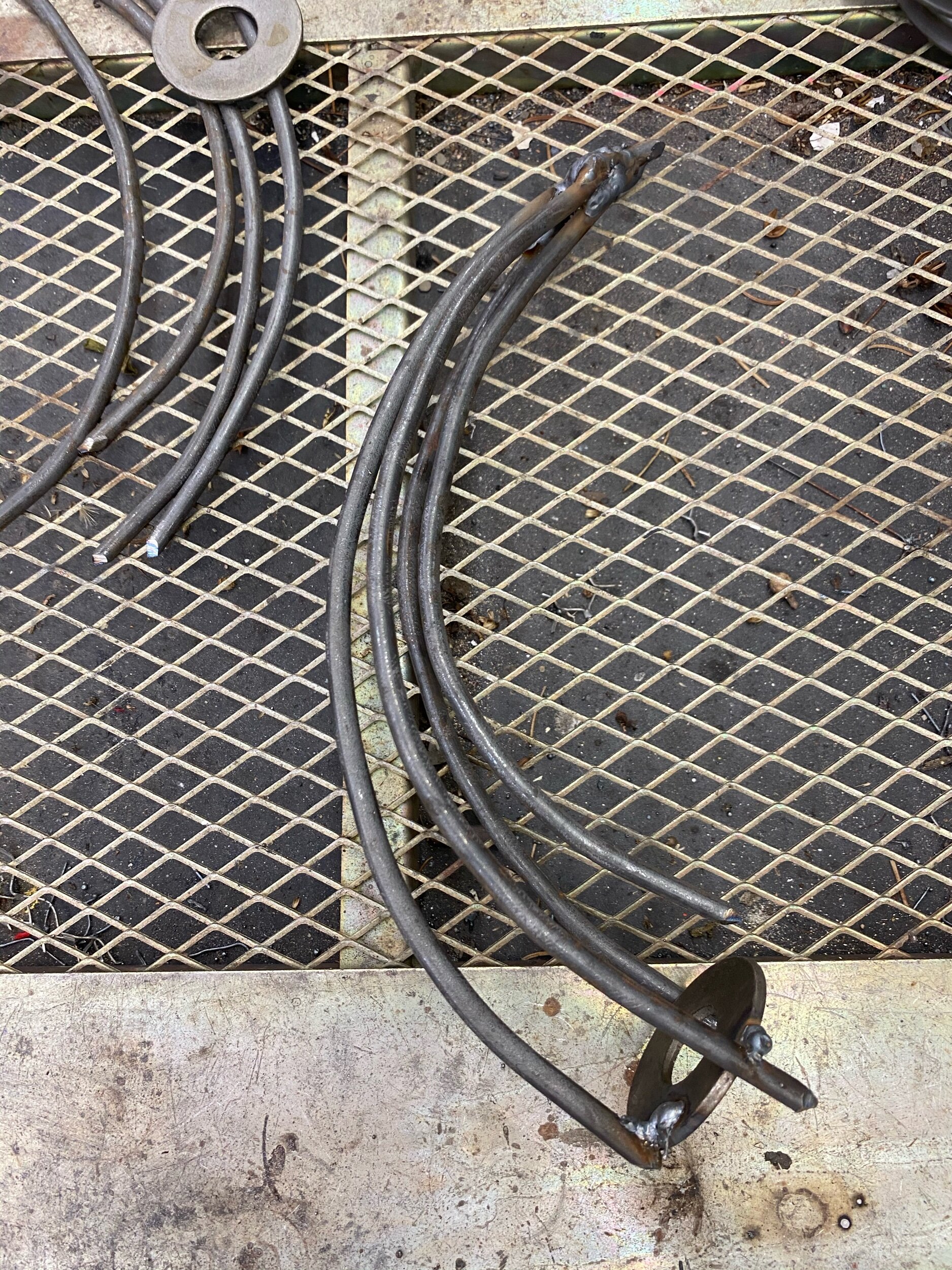
Working on the horns

This bison skull was a Christmas present. From Griffin and Alex my son and daughter in law. They have been unbelievably supportive of my environmental works. They are the best. The skull is proving extremely helpful in figuring out how to build the head armature.
For the Full story see Endangered Knowledge: The Soul of Humus
When I start to build a new piece the first thing I do is gather and organize all the reference images and information I am going to need.

I staple all the images to a piece of cardboard. This way it us easy to see as I work. This secti n focuses on the hoofs. I am starting with the hoofs.
For the full story see Endangered Knowledge: The Soul of Humus
One of the most critical problems to solve is the placement of the hooves. They will be welded to Steel plates that act as the base. The base serves several purposes; it will make it easier to transport the piece without damaging it, it will make working on a large piece safer and less likely to fall on me. I am going to use 4 - 14” X 14” 1/4” steele plates. One for each hoove. This will give me the flexibility to adjust the placement of the hooves as the piece develops.

I am sending the hooves to Blumenthal metal and having them weld the hooves to the plates. It is tricky welding to a thin plate and not warping the plate.
Why is this important to me? Please see Endangered Knowledge: The Soul of Humus
It does not stand to reason that gardens or yards in Texas, Maryland, California, Iowa, and Illinois should all be landscaped with the same selection of plants. The below image from Native Texas Gardens says it all. In a country with great diversity from coast to coast, shouldn’t the sculpture garden landscapes be embedded in plants that define the place?
It will be more interesting to see sculptures in gardens of indigenous plants, plants that define the place, terrains that have attracted its people and impacted its economy. A sculpture of a boat marooned in a desert landscape might imply global warming and the same wooden vessel docked in a sea of woody pines congers up thoughts of concervation. one thing the same boat Sculpture changes across geography. What does sculpture look like in a coastal prairie sculpture garden?

Page xviv of Native Texas Gardens, maximum beauty, minimum upkeep by Sally and Andy Wasowski.

I am spending a lot of time looking at and thinking about the bison's hoof. Bison are ungulates. Their two toed hooves are a cross between a spade and two chisels. With the weight of their massive bodies their hooves cut into the soil, churn it up, break clumps, and create pockets that hold moisture. They trample old vegetation into the ground a long with the 40 lbs of waste they create everyday. They have a two pronged tools on each leg that tills and cultivates 24/7. And then you put them in a herd and they are mother nature's industrial farmer.

Image from bob the bison used at epic food conferences
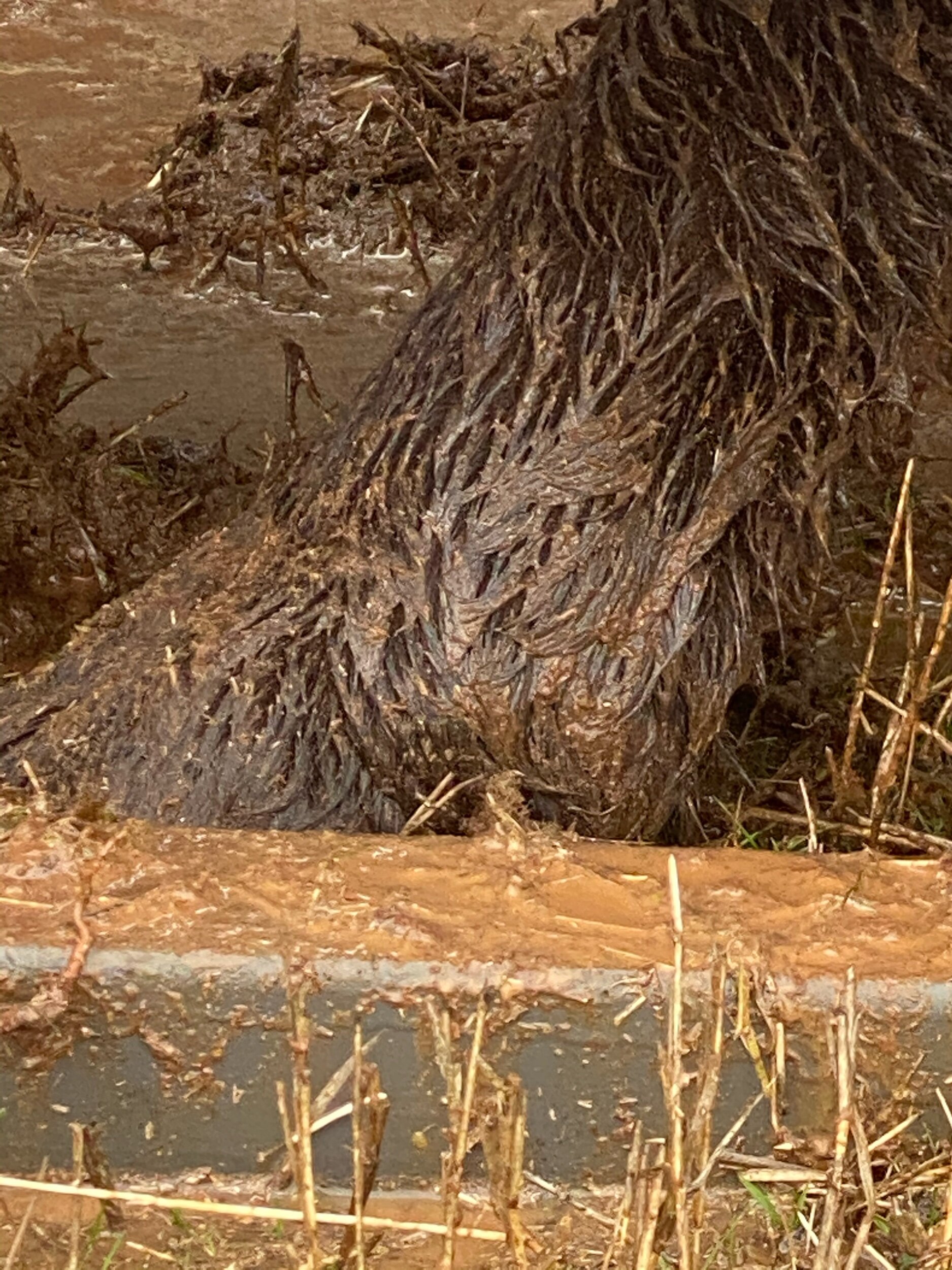
Image from under the shoot at the roundup

Image from the harvest
the back story Endangered Knowledge: The Soul of Humus